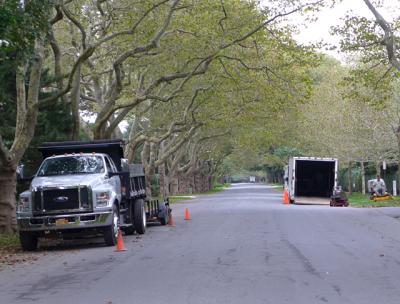On the Primaries
On the Primaries
Tuesday’s primary for two Democratic Party ballot slots in the forthcoming general election for East Hampton Town Board and for nine town trustees on the Independence line is a rather rare event: There have been few primaries for local elected offices here over the years.
The main event is among Councilwoman Kathee Burke-Gonzalez, who is hoping for a second four-year term, and Jeffrey Bragman and Zachary Cohen. Mr. Bragman is the East Hampton Democratic Party’s other official nominee, having been formally selected in May. Mr. Cohen had sought the Democratic nomination and petitioned to force a primary after being passed over. Whomever of the three emerge as the top two vote-getters will face the Republican candidates for town board on Nov. 7.
For the most part, the primary is viewed as a contest between Mr. Bragman and Mr. Cohen. Ms. Burke-Gonzalez has, to no small measure, proven an effective board member by leading efforts to regain local control of the town airport, and she is expected to easily secure the ballot position.
Mr. Cohen is well known to East Hampton voters. He was a candidate for East Hampton Town supervisor in 2011 but lost to the caustic incumbent in that post, Bill Wilkinson, while his Democratic running mates that year, Sylvia Overby and Peter Van Scoyoc, won handily. Mr. Cohen was politically active before and after that run in many capacities, notably acting as a self-appointed watchdog on town finances after the diversion of preservation fund money came to light and forced the resignation of Supervisor Bill McGintee.
Mr. Bragman’s name is one that has been in the news over the years, often as a lawyer taking on local officials. He was hired by neighbors of the controversial Dunes drug rehabilitation facility in a residential section of Northwest Woods and, more recently, represented neighbors battling the East Hampton School Board’s intention to build a bus storage and maintenance facility with an access driveway on Cedar Street.
Meanwhile, Independence Party voters on Tuesday will be asked to select a slate of nine trustees, who are a mix of candidates nominated by the local Republican and Democratic Parties, and Julie Evans, who successfully petitioned her way into a primary race after failing to gain Independence Party endorsement. Hers is an interesting candidacy both in terms of her background in commercial fishing and in that she has showed admirable determination in seeking a trustee seat. In an era in which the parties’ trustee choices have too often centered on name recognition, or whoever was left hanging around willing to take a shot regardless of how much they knew about trustee issues, Ms. Evans’s level of commitment is very welcome.
Registered Democratic and Independence voters will have an important opportunity to help shape the general election ballot on Tuesday. They should not miss the chance to have their voices heard.

